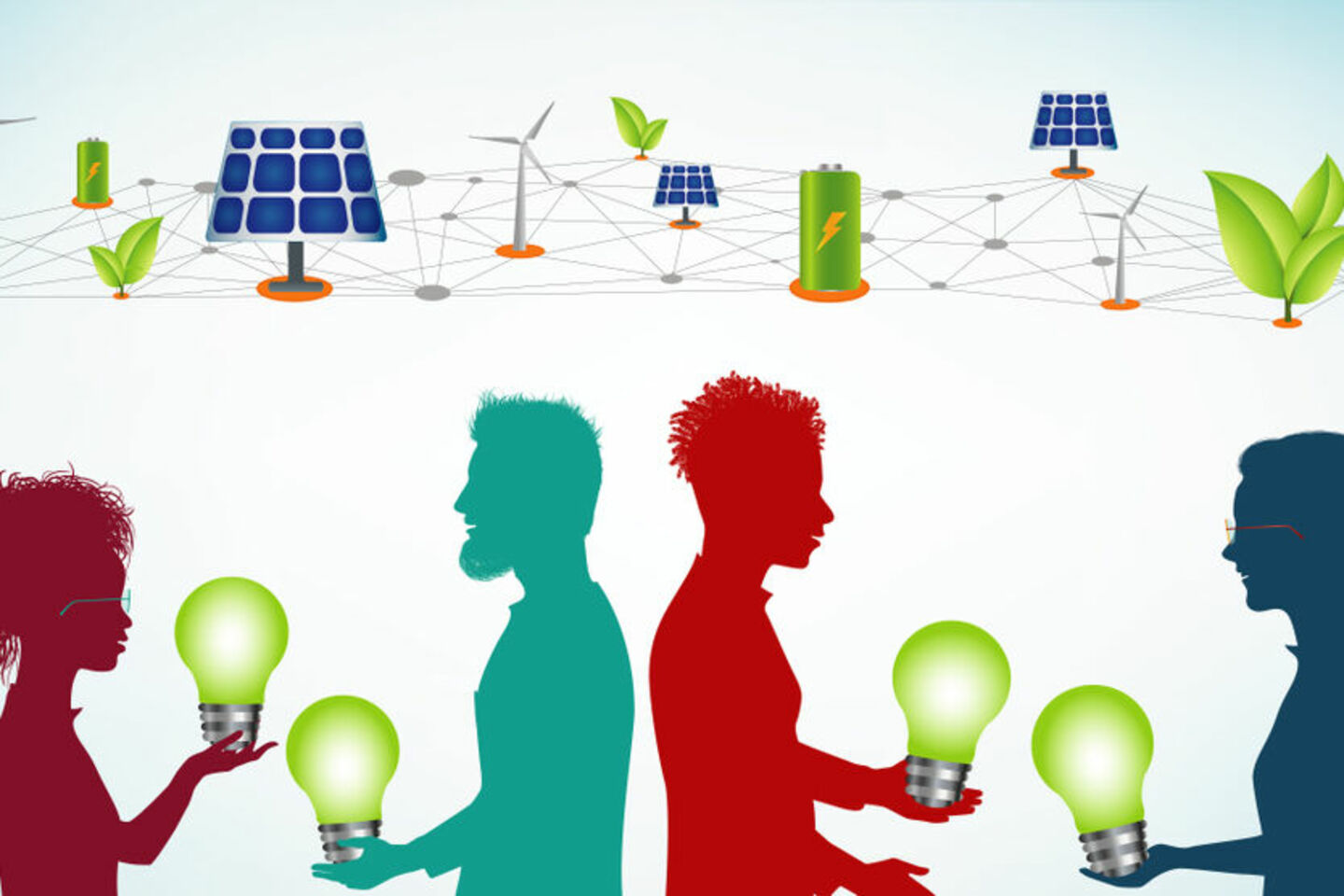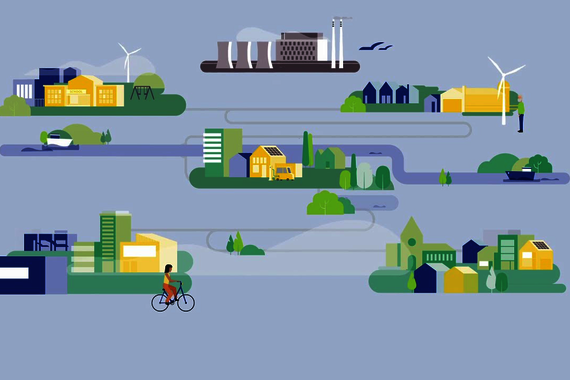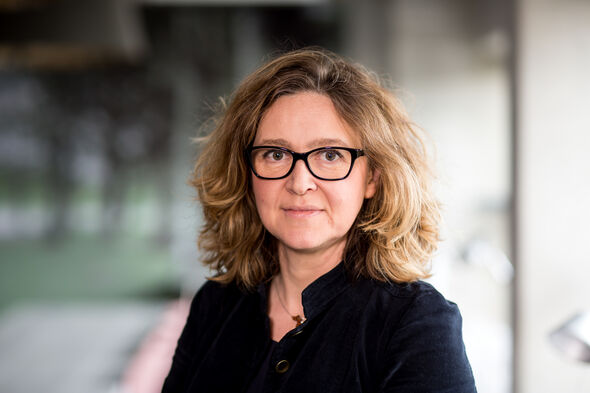
Accelerating the energy transition right in your own street
Prize-winning research on cVVPs
How do you turn prosumers, energy users that also produce energy themselves, into collective smart prosumers? Anna Wieczorek, associate professor at the department of Industrial Engineering & Innovation Sciences, and her team have developed a successful and prize-winning model for community-based Virtual Power Plants (cVPPs), in which active energy producers and managers are united in communities.
“Our research is about energy, electricity to be more precise, and about people taking an active role in it,” Wieczorek explains. “Most of us are passive energy consumers: we put the plug in the socket and pay the bill at the end of the month. But we need to change that attitude for a more sustainable future.”
“Currently, most energy comes from fossil sources and centralized power plants and networks: a couple of companies decide for you and me how energy is produced and distributed. Increasingly however, more and more people become prosumers. They put solar panels on their roofs or, if they have more space, a windmill on their grounds. Individually however they have no critical mass and cannot play on the energy market. When these prosumers come together in a street or village, they can work together, share energy and create an energy community. If additionally, they deploy a smart energy management system, they can become real players and create a more decentralized and thus more democratic energy system.”
Old-school energy
It used to be and often still is, one big power plant from a big company that delivers to a transmission work. Grid operators lower the voltage of the energy to a local distribution network and then energy is transported to individual houses. Now things are changing: consumers are becoming prosumers and the power plants begin to use more and more renewables from the sun and the wind. “But those renewables also bring challenges: we have no control over when the sun shines and the wind blows. Addition of renewables in the grid also causes bi-directional flows, while energy is a medium where supply and demand have to be balanced in real time, otherwise grids operators get huge problems with keeping the system congestion free,” Wieczorek knows.
Energy is a complex product. “Whatever you produce, you have to use. There is only very limited capacity to store energy and it’s very expensive to create storage for it, although a lot of research is being conducted to improve the storage capacities. But you can be smart about it. If you have an electric car, heath pump or an electric boiler, they all have some type of a battery and things can then really get interesting. With a battery, you can choose when to load it, and save money as there are day and night tariffs in the Netherlands. The prosumers that start to play with demand and supply and know when to sell their energy or load their assets in a smart way, we call smart prosumers. In order to help them be smart with energy, we created an ICT platform.”
Virtual platform with AI
Community-based Virtual Power Plants (cVPPs) are now deployed in three locations: Belgium, Ireland and the Netherlands. The latter experiment is in Loenen (regio De Veluwe, ed.). “Before we deployed the technology, we engaged in a social process with all the people and organizations involved in the experiments,” Wieczorek explains. “We mainly helped them spell out what they want to do with their energy, and how they want to organize themselves as a community. Organizing the communities takes a lot of time and is often driven by volunteers. Most likely from next year, communities will need a legal status. So it will require paperwork and skills to organize the administration: who will do that? Will that still be voluntary work, if not – where do we take funds from to pay people? You need to have clear agreements before you start with the platform.”
“To support the communities in that preparatory process, we made starter guidelines for them. It is a step-wise model available online for all who are interested. The digital platform used by the community can be configured only when people in the community agree on what they want and how they want it. The algorithm for the digital platform can then be scheduled to e.g. ‘load electrical vehicles that are connected to cVPP when the price is ‘x’ per kilowatt-hour (KWh)’. Or ‘if there is ‘z’ overproduction, sell the excess energy to the ‘y’ market if the price is such and such’. The platform is intelligent and reacts to weather, market conditions, price incentives and to individual preferences, and organizes accordingly.”
Fully flexible prices
“The next challenge is getting total flexibility in energy prices, not just day and night tariffs,” Wieczorek advocates. “And we need flexibility in the tariffs for network costs too, which are still static. If we don’t change that, there are no incentives for consumers to become smart prosumers. Nowadays, if I generate energy on my roof, I can’t sell it directly to my neighbor. I first have to sell it to an energy company, Nuon for example, and then they sell it to my neighbor. In that process I have no say about prices, amounts and timings. We need to change that if we are serious about an energy transition towards a more decentralized, democratic and renewable-based energy system in the future.”
A more sustainable future
“I have been in this business for over twenty years: together with colleagues I co-developed the field of sustainability transitions”, Wieczorek says. “I feel strongly driven by societal problems out there and the urgent need to solve them, not only study and write about them. It’s time we do something about the unsustainable way we produce and consume energy, so I act upon it by doing this type of practical projects. We do it in a smart way however, still do research, but one that is socially highly relevant. We are also aware that cVPP is just one way of re-organizing the energy system, but one that works, both technologically and socially. A radical transition of the entire energy system is however a long term and complex process. I expect that in some five years from now, the discussion about reorganizing energy system is more advanced and more experimental pilots like cVPP or other forms of aggregation, are set up at a much larger scale. The law is changing towards community advantage so I hope for serious negotiations with other actors and first signs of transformed markets.”
Prize-winning research
Wieczorek is proud of the prizes she and her team won. The valorization prize they received in 2020 from their own department had a grant attached that could be put back into the research and the execution of it. And the prize from the European Union was a huge compliment as it concerned the citizen award: the EU preselected three and the people voted. “That means the idea is supported by the community, something we need in order to accelerate the energy transition for a more sustainable future.”
Wieczorek’s team consists of Luc van Summeren and Laura van den Berghe (PhD candidates), Geert Verbong (professor emertitus), George Papachristos (assistant professor), Aleid Groenewoudt (project manager), Josja Veul and Sjoerd Pernot (master students and research assistants)



Discussion